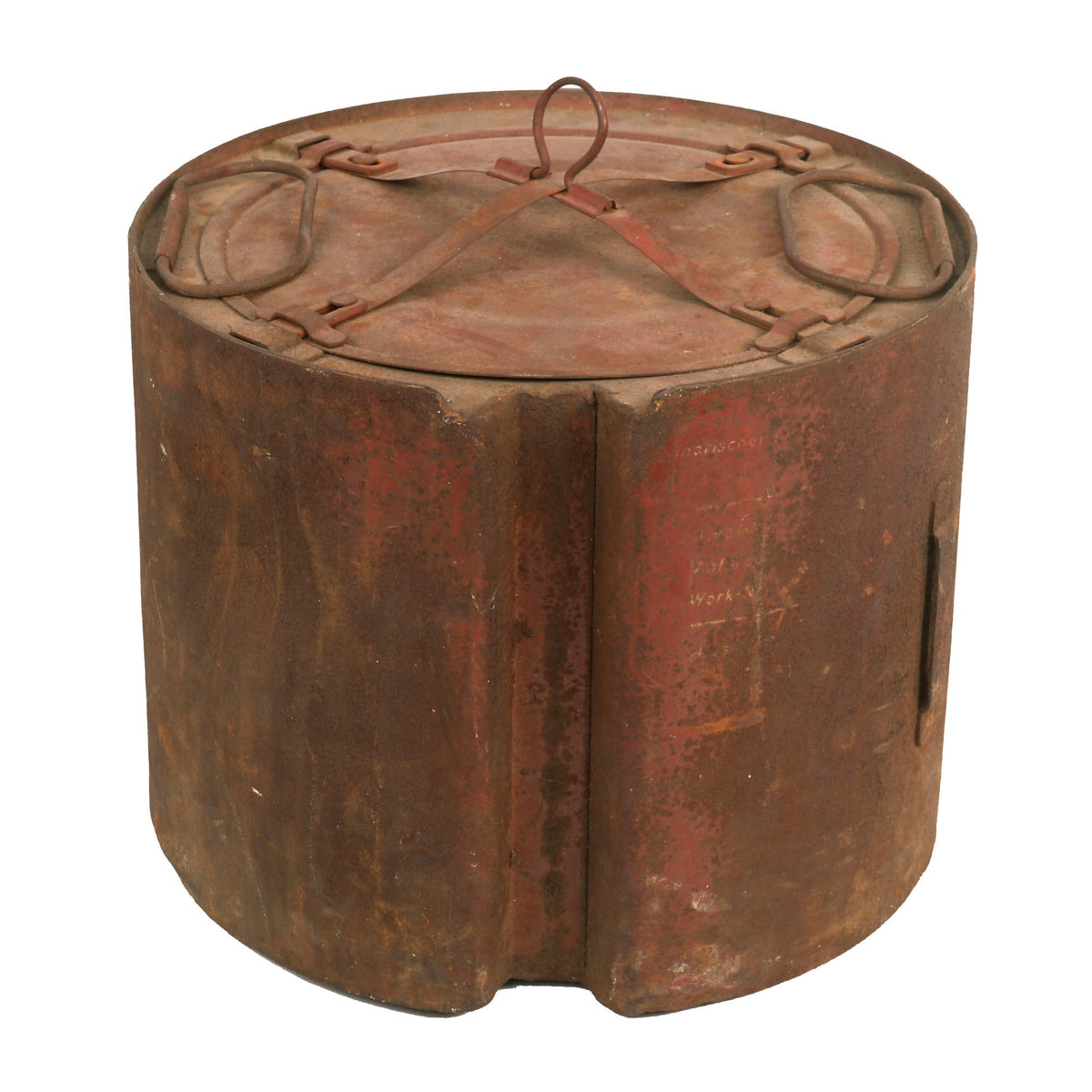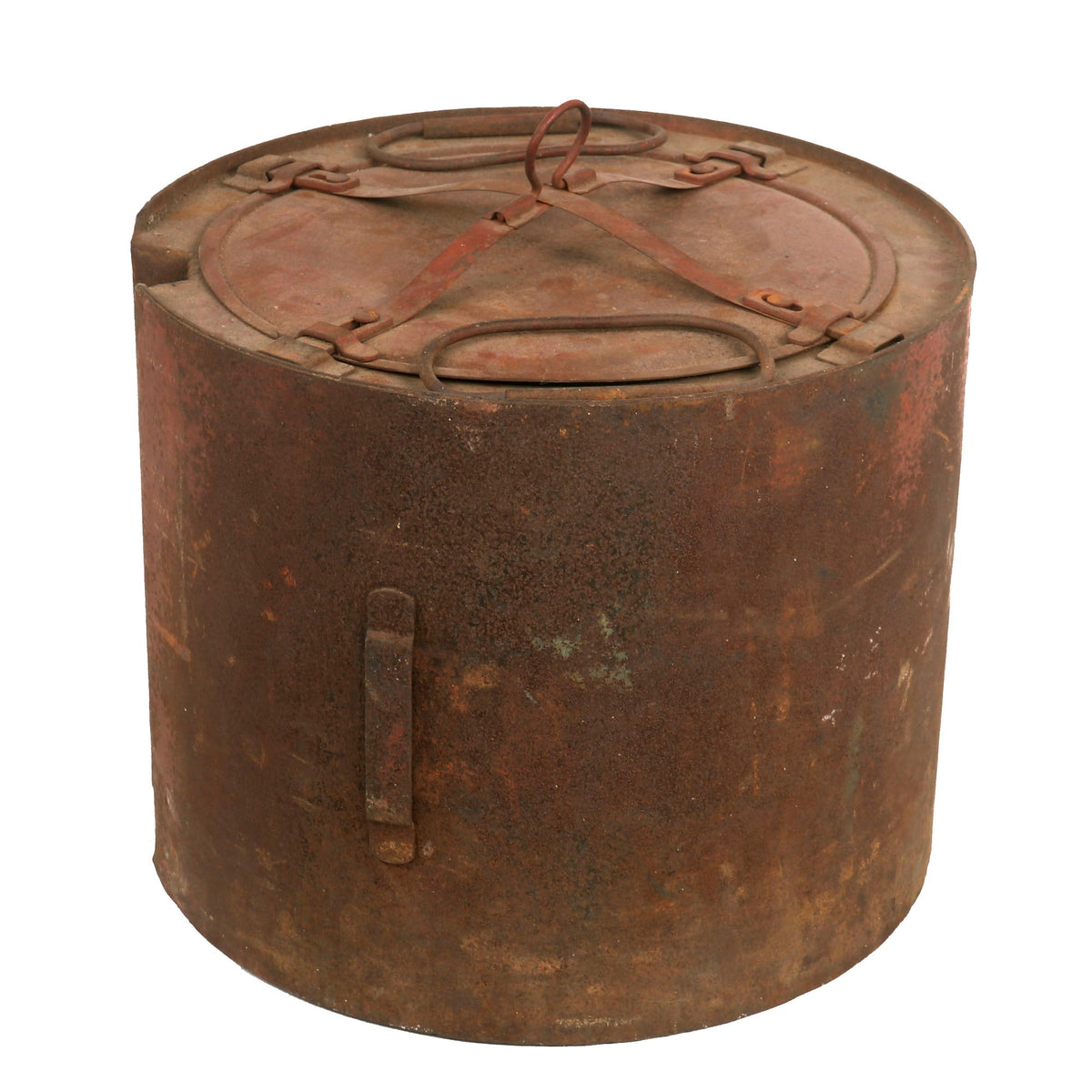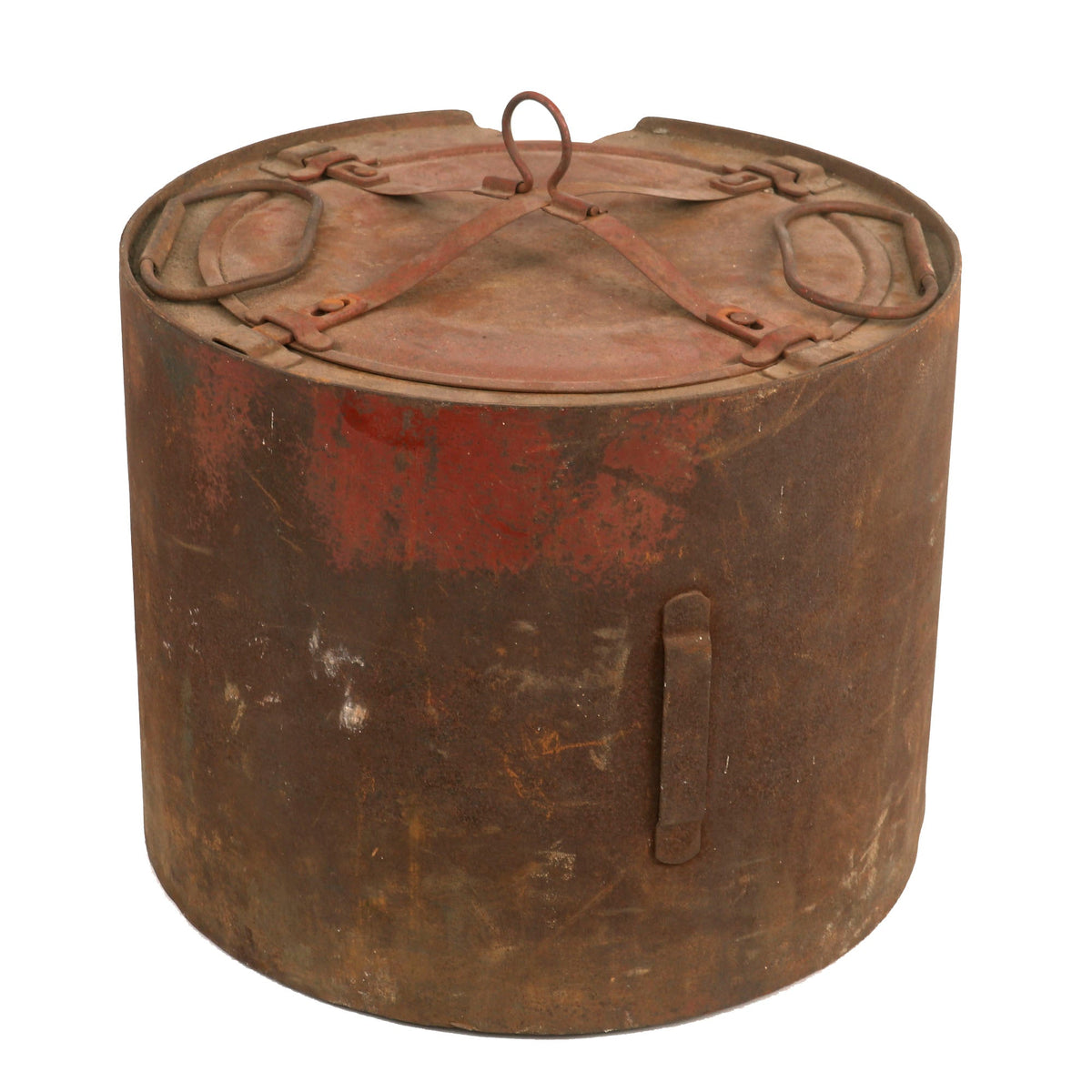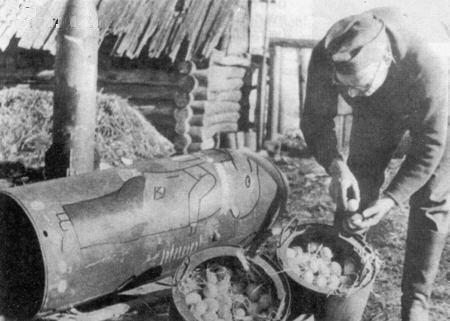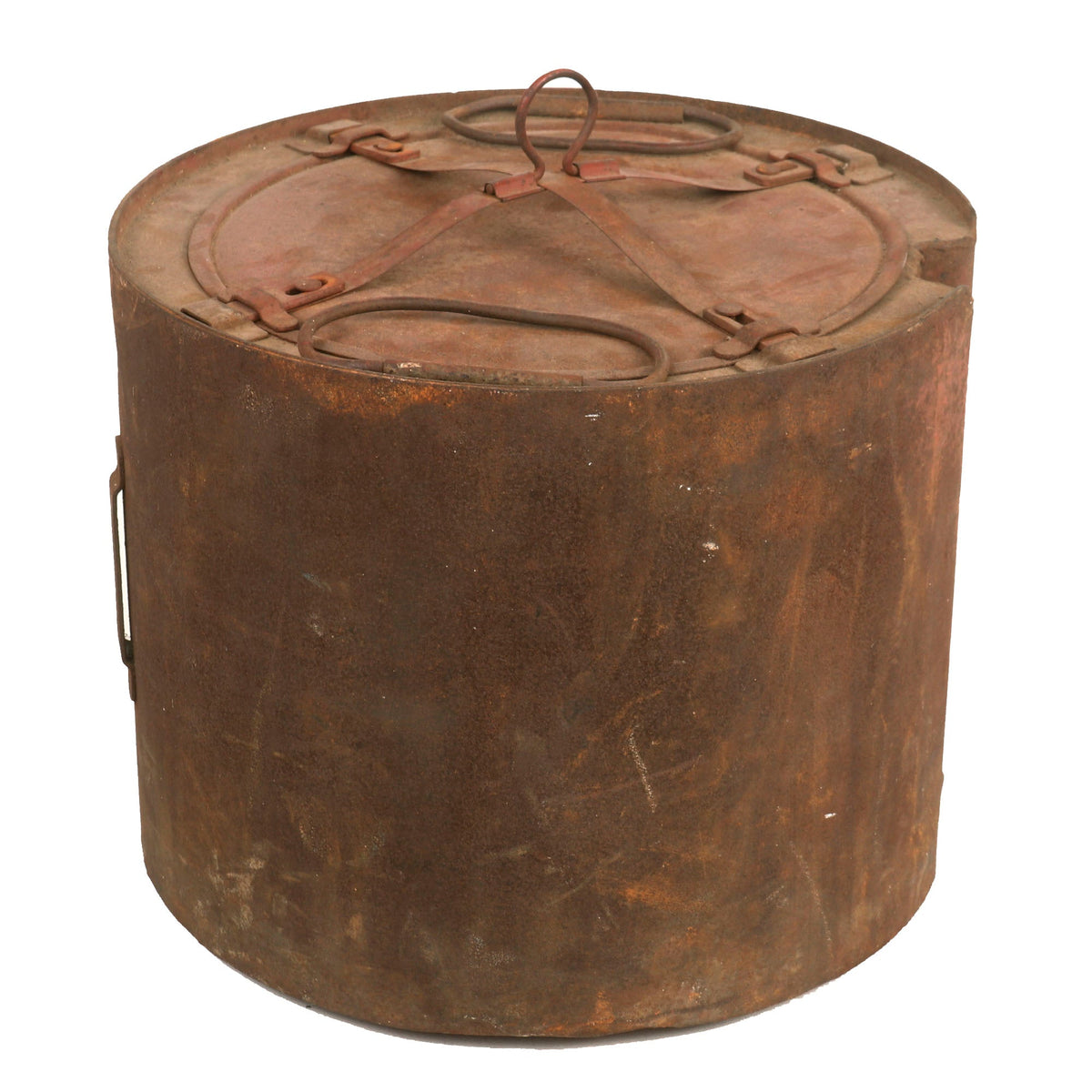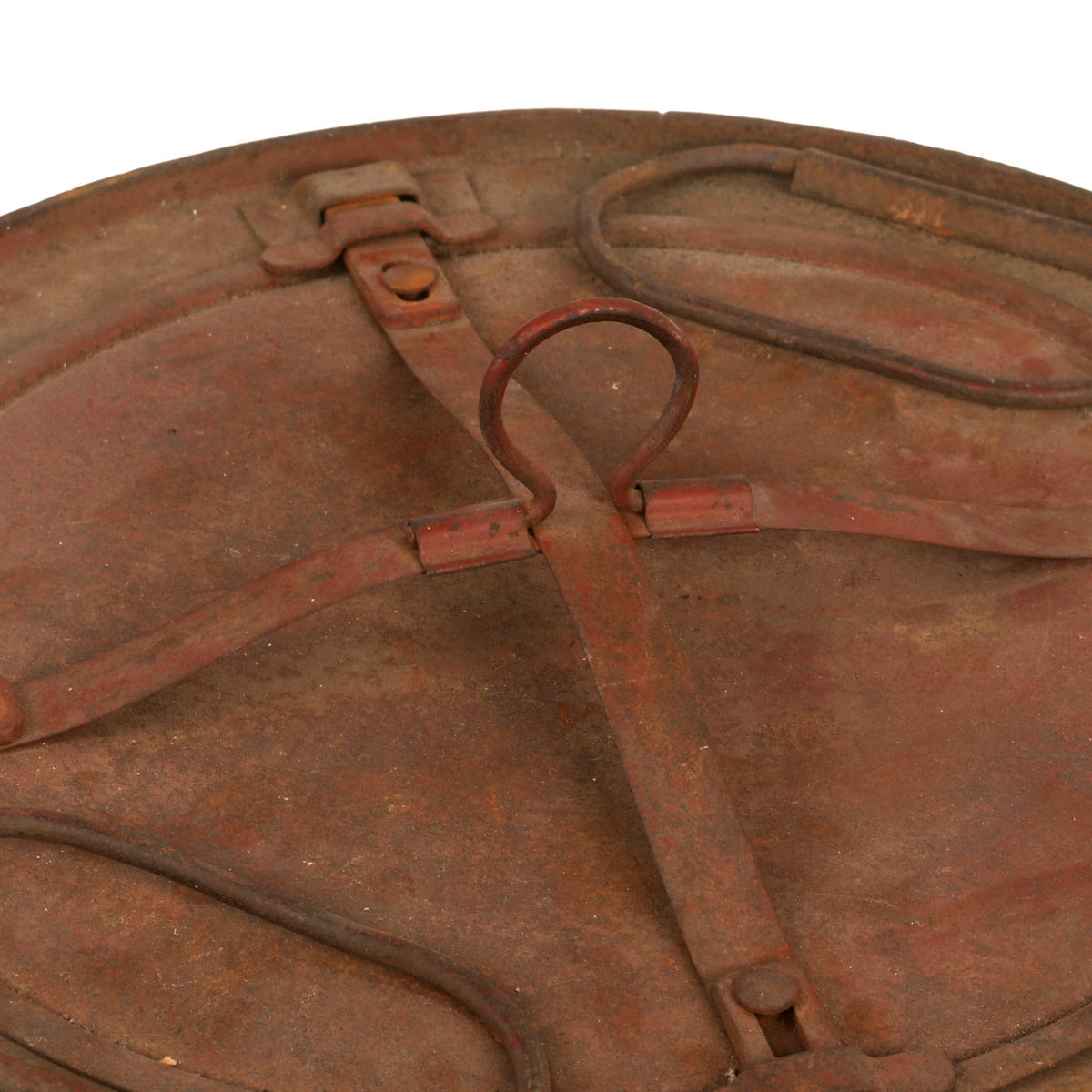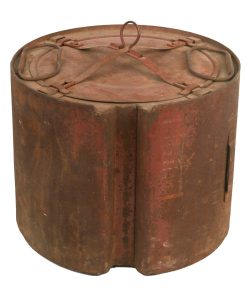Original German WWII Luftwaffe Fallschirmjäger Internal Canister for 250kg Parachute Drop Container Original Items
$ 295,00 $ 118,00
Original Item: Only One Available. During WWII, the German Luftwaffe’s Fallschirmjäger Paratroopers were integral to their success, as they could be dropped into areas not easily accessible to vehicles. This was often behind enemy lines, and they would would often not have easy access to supplies. To remedy this, the Luftwaffe designed the Abwurfbehälter für Nachschub (Drop Container for Supplies), which were dropped on parachutes along with the Fallschirmjäger themselves. They could also drop additional containers later to keep the troops well supplied.
There were several different versions of these, and the first of these was called the Mischlast Abwurfbehälter 250 (Kg) (Mixed Load Drop Container) which was a metal bullet shaped container. It was used by the Fallschirmjäger in the Norway campaign, and could be used a variety of ways. One of these utilized several internal canisters, which were keyed for insertion, with an inlet on one side. This is one of those containers, and it measures 13 1/2″ in diameter and 10 5/8″ in height. We have found a period picture of several of these with eggs contained inside.
It is in very good condition, with the original red paint now partly missing, with the underlying steel having rusted a bit. It shows some original markings on the side, however they are only partly legible. It has a top cap opened by pulling on the central ring, which retracts leaf springs from slots on the edge. Unfortunately, the two carry handles on the top are rust frozen in place, so we were not able to get a look inside.
There were other configurations of the drop containers for ammunition, guns, and so forth. Later a 700 kg wooden version would be made.
A very interesting piece of Luftwaffe Fallschirmjäger paratrooper equipment! Ready to research and display!
The Fallschirmjäger (Parachute Hunter / Paratrooper) were the paratrooper branch of the German Luftwaffe before and during World War II. They were the first German paratroopers to be committed in large-scale airborne operations and came to be known as the “green devils” by the Allied forces they fought against. The Fallschirmjäger were very effective when used in commando style raids. The Fallschirmjäger were famous for their willingness to give every effort unwaveringly even in the grimmest of situations. The Fallschirmjäger were seldom used as parachutists. Instead, they were prized for their combat abilities and frequently acted in a “fire brigade” role as roving elite infantrymen. Throughout World War II the Fallschirmjäger commander was Kurt Student.
The Luftwaffe, the air force of the German military during the Third Reich, was established in 1935. Over the next 10 years, Luftwaffe troops wore a huge variety of uniforms. Enlisted men generally wore uniforms issued from military depots. Most enlisted soldiers had wool trousers and a short jacket with two internal lower pockets, called a Fliegerbluse, as well as a dressier 4-pocket tunic, the Tuchrock. Officers wore the same general uniform styles, but as officers had to supply their own uniforms, they usually wore tailor made versions. There were also myriad varieties of specialized uniforms worn by certain units or in specific situations, from the tuxedo-style “gala” formal wear uniform of the pre-war period, to the plain coveralls worn by crews of anti-aircraft cannons. There were work uniforms, tropical and summer uniforms, and camouflage clothing for airborne troops and other Luftwaffe soldiers in ground combat. Flight crews had their own specialized gear, including leather jackets and warm, electrically heated suits. Most but not all Luftwaffe uniform jackets bore the Luftwaffe emblem of a flying eagle holding a swas.
Fast Shipping with Professional Packaging
Thanks to our longstanding association with UPS FedEx DHL, and other major international carriers, we are able to provide a range of shipping options. Our warehouse staff is expertly trained and will wrap your products according to our exact and precise specifications. Prior to shipping, your goods will be thoroughly examined and securely secured. We ship to thousands clients each day across multiple countries. This shows how we're dedicated to be the largest retailer on the internet. Warehouses and distribution centres can be located throughout Europe as well as the USA.
Note: Orders with more than one item will be assigned a processing date depending on the item.
Before shipping before shipping, we'll conduct a thorough inspection of the items you have ordered. Today, the majority of orders will be delivered within 48 hours. The delivery time will be between 3-7 days.
Returns
The stock is dynamic and we cannot completely manage it because multiple stakeholders are involved, including our factory and warehouse. So the actual stock may alter at any time. It's possible that you may not receive your order once the order has been made.
Our policy is valid for a period of 30 days. If you don't receive the product within 30 days, we are not able to issue a refund or an exchange.
You can only return an item if it is unused and in the same state as the day you received it. You must have the item in its original packaging.
Related products
Uncategorized
Uncategorized
Uncategorized
Uncategorized
Uncategorized
Angolan Rebel 1970s era 60mm Inert Display Mortar from Angolan Civil War Original Items
Uncategorized
Australian WWII Owen MK1 Machine Carbine SMG Custom Fabricated Replica with Sling Original Items
Uncategorized
Uncategorized
Band of Brothers ORIGINAL GERMAN WWII Le. F.H. 18 10.5cm ARTILLERY PIECE Original Items
Uncategorized
Armoured Fighting Vehicles of the World: AFVs of World War One (Hardcover Book) New Made Items
Uncategorized
Uncategorized
Uncategorized
Uncategorized
Uncategorized
Uncategorized
Uncategorized
Uncategorized
